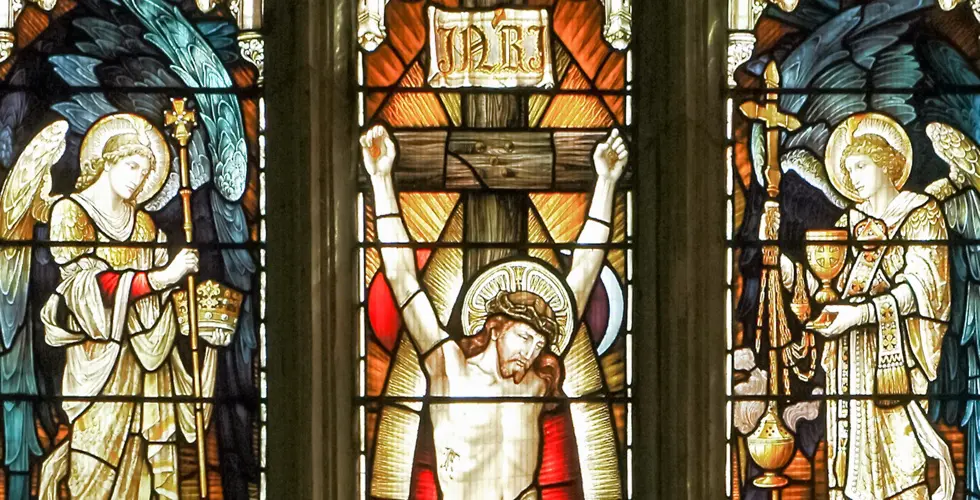
(This is part five of a series liveblogging Tim Suttle’s book, Public Jesus. You can read the introduction to the series here, my post on the first chapter here, and a discussion on Suttle’s Introduction here. Each chapter will be liveblogged.)
Truth be told, Tim Suttle’s chapter on the Eucharistic life is hard to swallow. Not because he misses the mark or made theological errors. It was challenging because I can’t imagine anybody wanting to hear what he says.
Christians like to talk about and enjoy the benefits of the the body and blood of Christ. Why wouldn’t we? It’s important to recognize those benefits. The difficulty comes when we need to be willing, really willing, to let the body and blood of Christ make demands on us. We love to share in Christ’s resurrection, but who wants to die to self?
The theological battlefield surrounding the meaning of the Eucharist/Communion/ Lord’s Supper has as many participants as any other theological issue. How to apply the meaning is twice as varied. I’ve personally struggled over the past decade to make sense of both its meaning and application. Yet despite the journey of learning more and more, every time our church serves the bread and wine, I continue to be confused as to the place this practice has in my life and in God’s community.
If you’re looking for answers to the mystery of Eucharist, Suttle doesn’t spell everything out in this chapter. He jumps to the crux of the matter: Eucharist isn’t just some emblematic ritual; rather, it is a practice that makes us come undone. Christ gave his life, all he was, to redeem humanity. If the church is the body of Christ (Romans 12:4–5), the fullness of Christ (Ephesians 1:22–23), with many members representing different parts (1 Corinthians 12:18–20), then in some way, being part of the body of Christ makes us as individuals whole. It will take more than one member of a body in order to image Jesus in the world.
I was taught growing up that Communion was no more than for us to remember what Jesus did on our behalf. I’ve come to believe that it has to be much more than just a reminder. It seems as though one of the two most important practices of the church (alongside water baptism) is probably much more than a mere reminder. But while it’s much more than a reminder, it’s also nothing less than one. Suttle tells us that the Eucharist does indeed remind us of something, but not of Christ’s work on our behalf (although that is also true), but of our work on behalf of the world as Christ’s body. It reminds us of who we are: cruciform images of God for the benefit of the world.
Suttle writes, “Somehow our participation in the Lord’s Supper is part of how we all come to participate in the body of Christ. Because we share in this feast, we share a common life that is defined by Jesus Christ.” He goes on: “We are the body of Christ. We are the hands and feet of Jesus. We are the means by which Christ is present to the world. And, what the world needs more than anything is the presence of Christ.”
Suttle goes on to explain that a cruciform life, a life shaped by having the mind of Christ, is living as Jesus lived and dying as Jesus died. He concludes, “the self-emptying God came into the world is a self-emptying man. The world’s true Lord, the ruler of all creation, poured his life out to make away back to God. And so God will put people back together this way—through cruciform lives. And God will put the world back together this way—through cruciform church.”

Articles posted on LCI represent a broad range of views from authors who identify as both Christian and libertarian. Of course, not everyone will agree with every article, and not every article represents an official position from LCI. Please direct any inquiries regarding the specifics of the article to the author.
Did you read this in a non-English version? We would be grateful for your feedback on our auto-translation software.
), //libertarianchristians.com/wp-content/plugins/smartquizbuilder/includes/images/template6-latest.jpeg))

), https://libertarianchristians.com/wp-content/plugins/smartquizbuilder/includes/images/template6-latest.jpeg))








































), https://libertarianchristians.com/wp-content/plugins/smartquizbuilder/includes/images/template6-latest.jpeg))
), https://libertarianchristians.com/wp-content/plugins/smartquizbuilder/includes/images/template6-latest.jpeg))
), https://libertarianchristians.com/wp-content/plugins/smartquizbuilder/includes/images/template6-latest.jpeg))





*by signing up, you also agree to get weekly updates to our newsletter
Sign up and receive updates any day we publish a new article or podcast episode!